Hanoi The Soviet pan from the subsidy period is still used by Hong Trang sandwich shop to serve pan bread.
Located at 170 Trieu Viet Vuong, Hong Trang bread is one of the long-standing banh mi chao shops in Hanoi, dating back to the subsidy period and moved from 116 Mai Hac De about 7 years ago.
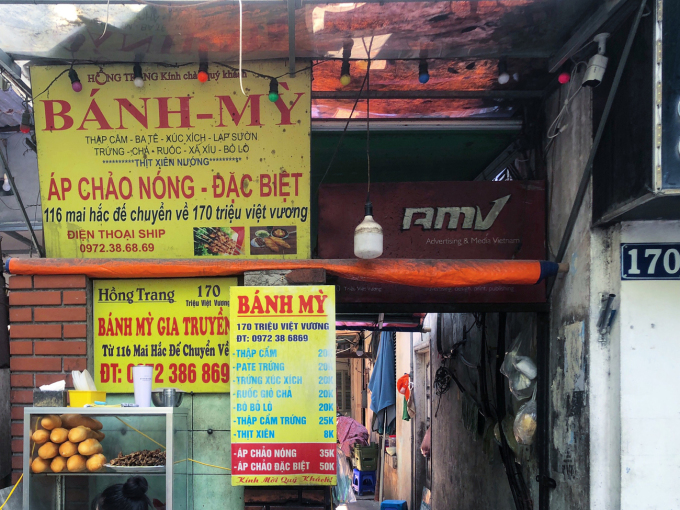
The shop's sign is small and not prominent, located next to two sandwich shops so customers can easily confuse it.
The restaurant is open from 6am to 10pm daily. There are two areas for customers to sit and eat, a small space in the alley, with two plastic tables for 4 people. The outdoor space is both a place to put about two or three sets of tables and chairs, and a parking space.
The special feature of the banh mi chao dish at Mrs. Trang's (67 years old) shop is the Soviet pans that are more than 40 years old. According to her, during the subsidy period, she had the opportunity to enjoy European steak, beautifully presented and unique. Based on that, she created the banh mi chao dish with a similar presentation but using familiar ingredients at an affordable price so that everyone can enjoy it.
Ms. Trang bought about 50 sets of pans, including knives and forks, from an acquaintance who went to the Soviet Union. Over time, the restaurant now has more than 10 left, only serving them when there are too many customers and the plastic-handled pans have run out. The pans are old but polished and cleaned, giving a nostalgic feeling.
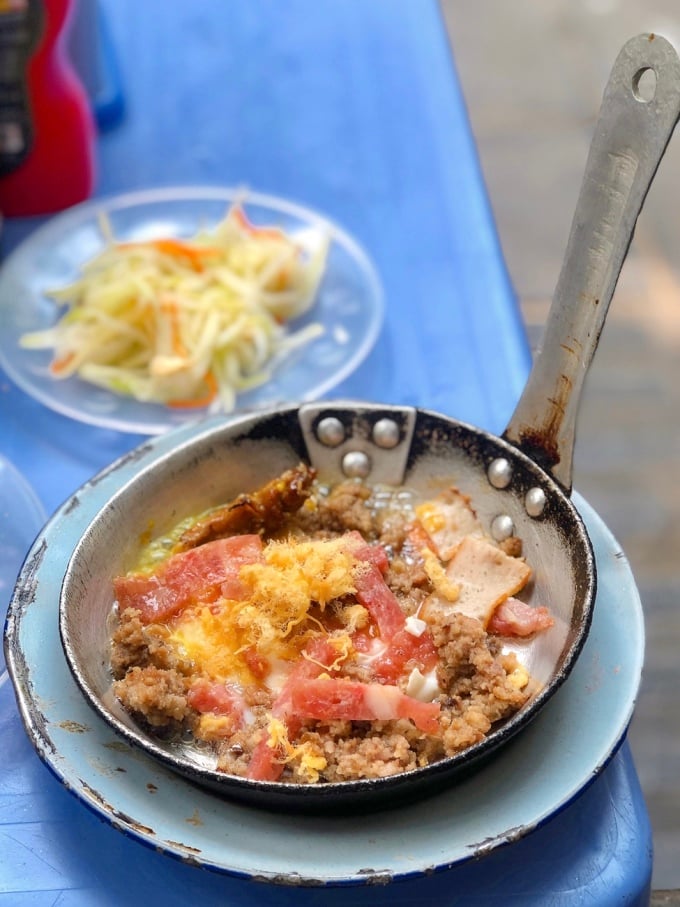
The pan bread dish is made using the restaurant's 40-year-old Soviet pan.
The restaurant sells two types of fried bread at different prices. The 35,000 VND portion includes: fried egg, skewered meat, pate, red sausage, ham, and shredded pork. The 50,000 VND portion includes an additional beef ball spread with a special sauce made by Ms. Trang herself. The restaurant also sells sandwiches with fillings made from the above ingredients, priced from 20,000 to 25,000 VND.
When customers order, Ms. Trang starts cooking, so the banh mi chao is always served while it is still hot. First, she cracks an egg into the hot pan, then adds the skewers, pate, red sausage, ham, and finally the shredded pork. The pate and skewers are made by Ms. Trang herself, while the other ingredients are carefully selected to ensure hygiene.
"The cooking process is not difficult, but the service is quite hard," Ms. Trang shared. In the old location, the restaurant used up to five charcoal stoves, making the space hotter in the summer. After moving here, the restaurant switched to using two electric stoves, improving the speed of service. Each pan takes less than five minutes to prepare.
Each serving comes with crispy toast and pickled vegetables. Unlike other restaurants, Mrs. Trang's pan bread does not have sauce but instead has soy sauce.
Tear off a piece of crispy bread, spread some thick egg yolk on it, place the pate, skewers, ham and pork floss on top and enjoy. "The egg yolk is rich, the pate and ham are soft and fatty, and the skewers are sweet thanks to the careful marinating," a customer shared at the restaurant.
However, because the ingredients are high in protein, the dish can be boring. Diners can order iced tea, Chinese yam or soy milk to balance the taste. Before adding soy sauce to the pan, diners should taste it to adjust the taste to avoid being too salty.
The shop's customers are of all ages and classes, including tourists from other provinces and cities and foreigners. When she was still in Mai Hac De, the shop sold about 700 - 800 sandwiches a day, and in the winter it could reach nearly 1,000. However, after moving to a new location, the number of customers is only about 40 - 50% of what it used to be.
Ngo Thi Van Anh (Hanoi) said this was her favorite restaurant when she was in high school. Back then, a pan cost only 10,000 VND. Minh Huyen (32 years old), whose grandmother lives in Mai Hac De, said that the pan bread dish has been around since before she was born.
Mr. Chu Van Duong (Hanoi) was often taken here by his father to eat banh mi chao when he was a child. "In the past, when things were difficult, seeing this banh mi chao made me crave it. Now, I come to the restaurant mainly to find the feeling of my childhood," he said. The taste of the dish has changed due to the change in ingredients. Mr. Duong advises diners to come and enjoy and evaluate because everyone's taste is different.
The restaurant is not very spacious, at most there are about 7 or 8 tables and chairs, so during peak hours, customers who arrive later will have to wait for a table. On weekdays, the busiest time is noon, and on weekends, it is crowded in the evening. The restaurant does not have its own parking space, some of the dining tables outside are placed right next to motorbikes, causing inconvenience to customers.
Article and photos: Quynh Mai
Source link










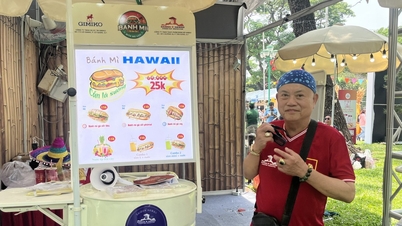
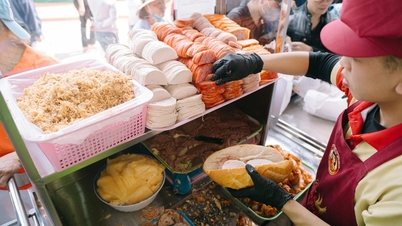


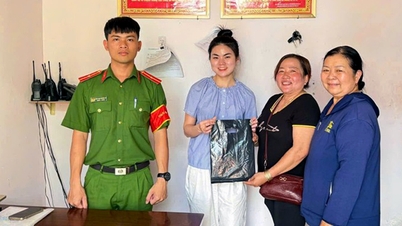
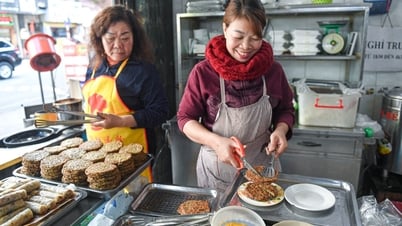





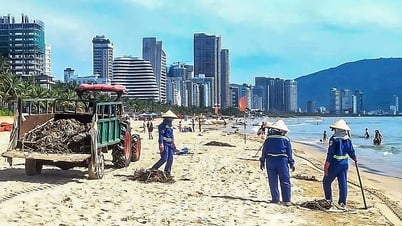

























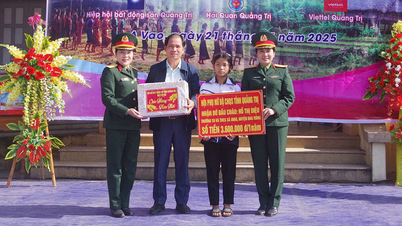









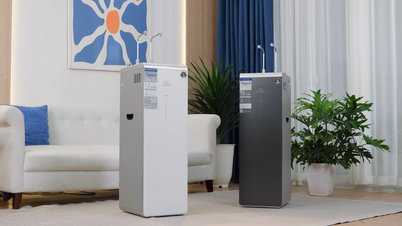




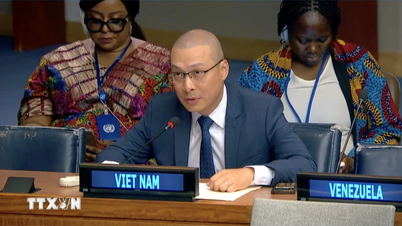



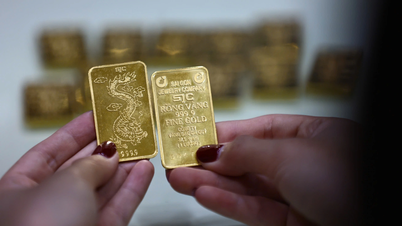
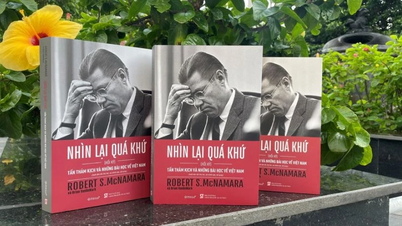













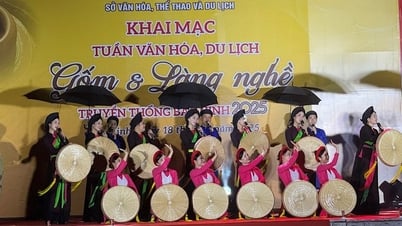

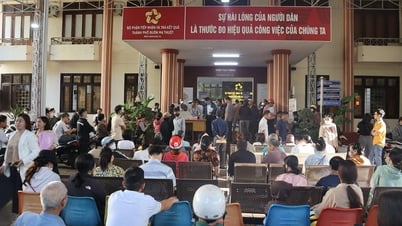

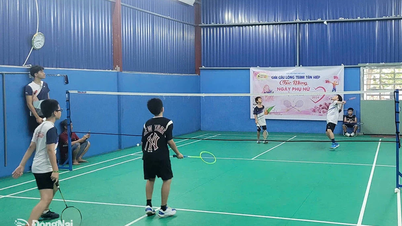



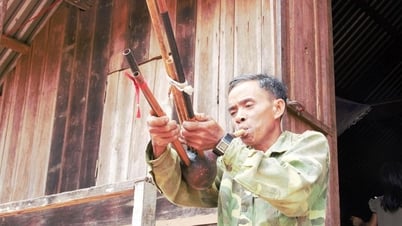












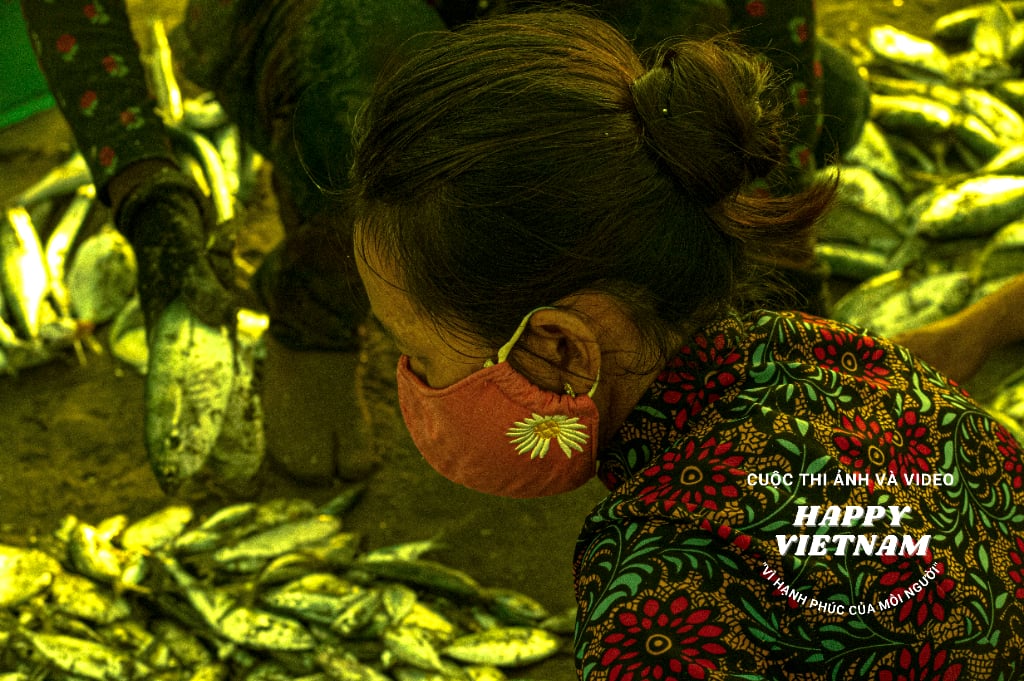

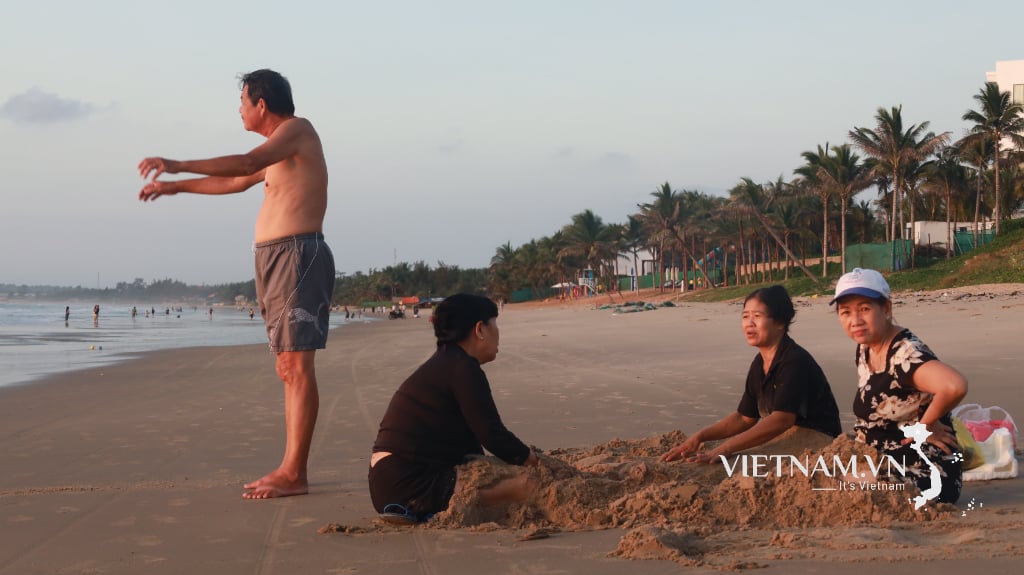
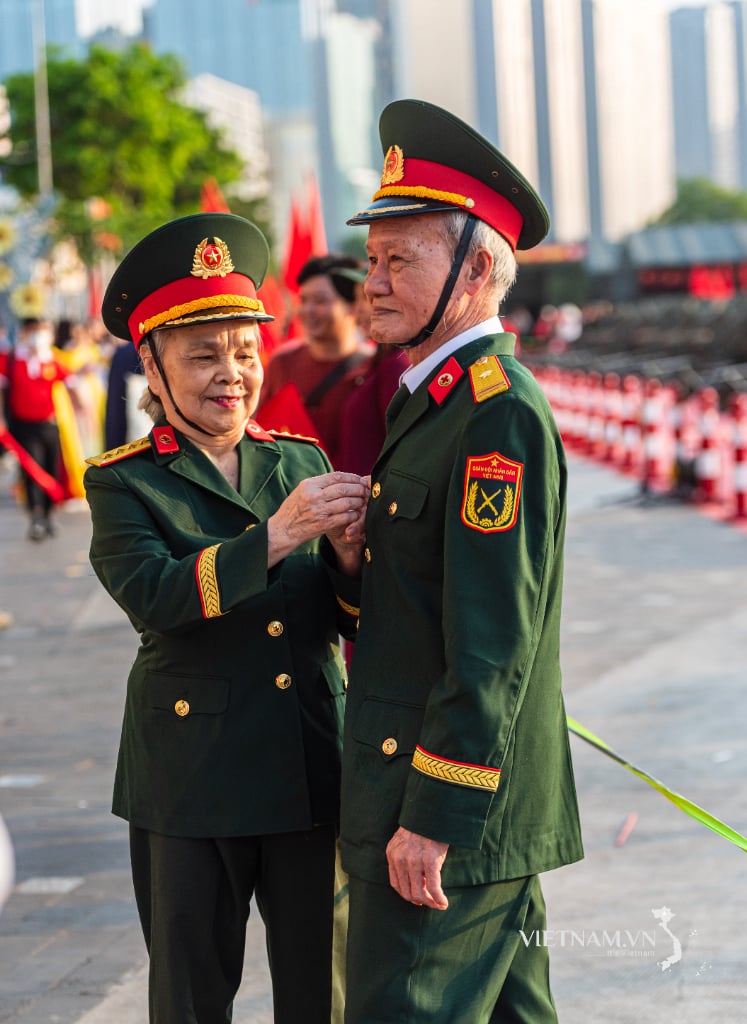
Comment (0)